|
Become a High Performing Provider (HPP) for Veterans

|
|
Earn advanced certification
|
Prevent Veteran suicide anytime

|
From active duty to caring for Veterans

|
|
V A "G O O D N E W S" S T O R I E S
I C Y M I
Update on Weblinks
|
|

Here's what you need to know about the HPP designation and how to secure it.
What is a High Performing Provider (HPP)?
HPPs are CCN providers who meet or exceed quality and cost-efficiency criteria based on nationally recognized measures such as Health care Effectiveness Data and Information Set (HEDIS) and Physician Quality Reporting System (PQRS) measures. HPPs have been evaluated by one of VA's third-party administrator (TPA).
How are providers designated HPPs?
Community providers and group practices are evaluated based on quality and cost-efficiency measures determined by VA and TPAs, resulting in a score. Group practice scores are calculated by combining results of individual providers into a single score. TPAs establish scoring thresholds for each eligible specialty evaluated. Based on the scores, individual and group practices receive a "Yes," (Y) "No," (N) or "Unknown" (U) designation as HPPs.
The HPP designation appears in VA’s Provider Profile Management System (PPMS) and HealthShare Referral Manager (HSRM).
How are VA staff encouraged to get Veterans to schedule with an HPP?
Facility community care staff use PPMS to identify CCN providers and schedule Veteran appointments with HPPs when possible. In PPMS, the HPP designation is visible in the provider summary section under the provider service tab. In HSRM, HPP designations are displayed when checking for incoming referrals. VA offers HPP training to field staff.
All CCN providers meet separate credentialing requirements apart from the HPP evaluation process. You can access a reference sheet by clicking here.
Support
Have a question? Send a message to vhaumhpp@va.gov
Additional information for VA’s community providers: https://www.va.gov/COMMUNITYCARE/providers/index.asp.
|
|
|
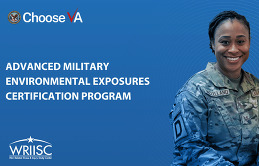
If you’ve earned your Level 1 Military Environmental Exposure (MEE) certification, MEE Level 2 is open to you. In the basic course, attendees learn how to ask Veteran patients about military environmental exposures and address exposure-related health concerns. Level 2 builds on that knowledge through case studies and scenarios that can help you effectively identify, treat, and manage the effects of commonly reported military environmental exposures.
Upon successful completion of the 10 Level 2 modules and comprehensive exam, you will earn 10.5 Continuing Education (CE) credits and certification. The modules and certification exam can be completed on-demand; you have up to six months to successfully complete all components.
The level 1 and 2 military environmental exposure trainings were developed by VA’s War Related Illness and Injury Study Center (WRIISC) and Health Outcomes Military Exposures and are offered in partnership with the American College of Preventive Medicine (ACPM). Learn more about the certifications and steps for completion at Military Environmental Exposures Certification | ACPM. Check out the training flyer here.
|
|
|
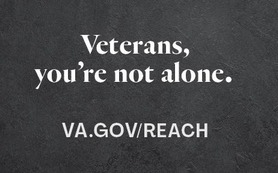
Year-round, VA prioritizes raising awareness about risk factors, warning signs and available support for Veterans who may be at risk for suicide or experiencing a suicidal crisis.
The conditions that lead to suicidal thoughts are complex. There is no single reason for it, but VA staff and providers can play a role in preventing a crisis for a Veteran before it occurs.
VA’s national “Don’t Wait, Reach Out” campaign is a reminder for Veterans to seek assistance before things become overwhelming. VA is also asking Veterans “When was the last time you asked for help?” in their new “Questions” public service announcement because often Veterans lose sight of their own welfare when focusing on helping others in need.
Don’t be afraid to engage in these critical conversations with Veterans. Sometimes the first step in preventing a crisis can be as simple as asking “How are you doing?” Building rapport and creating a safe space for Veterans to ask for help can make all the difference.
Emergent suicidal crisis help is always available for Veterans in a suicidal crisis
In the event of an emergent suicidal crisis, Veterans should seek care at the nearest hospital. VA will furnish, pay for or reimburse the cost of eligible Veterans’ emergent suicide care and treatment at a VA or non-VA facility. This includes ambulance transportation, related prescriptions, up to 30 days of inpatient or crisis residential treatment and up to 90 days of outpatient care at no cost to Veterans.
For more information about Veteran eligibility requirements, visit the Community Care emergency medical care page.
In times of distress, let Veterans know they can call 988 (press 1); text 838255 or chat online to connect with the Veterans Crisis Line. This free, 24/7, confidential resource offers support from trained professionals to anyone—including family members and friends of a Veteran. Visit the crisis line site to spread the word: download online, social, printable and other digital resources to post around your facility or office.
How to report emergency care to VA
Use VA’s Emergency Care Reporting (ECR) portal or call 844-72HRVHA (844-724-7842) to start the authorization process, care coordination and potential transfer of the Veteran patient to a VA facility.
In most instances, eligible Veterans will receive VA-authorized emergency care at an in-network community facility if VA is notified within 72 hours of the start of care. Please include a valid email address for decision correspondence.
You will need to record the notification identification number assigned through the ECR portal or by phone to retrieve authorization decision information on emergency events. VA no longer includes Veterans’ personal identifying information in outgoing correspondence.
Timely reporting ensures administrative and clinical requirements are met allowing VA to pay for the care. It also helps reduce the Veteran’s stress and worry when they are most vulnerable and during their recovery.
Resources
|
|
|

A chiropractor in the TriWest Healthcare Alliance (TriWest) network shares why caring for Veterans is so important. View her personal story about serving the unique needs of Veterans.
|
|
|
|
E D U C A T I O N & T R A I N I N G
In this training, presenters will discuss common concerns about per- and polyfluoroalkyl substances (PFAS) and future directions VA is taking to improve understanding of PFAS. PFAS are man-made chemicals used in industry and consumer products worldwide for decades. Studies have demonstrated associations between exposure to specific PFAS and several health issues including liver disease, altered immune and thyroid function and cancer. The audience for this training is physicians, physician assistants, nurses and pharmacists.
Location: VHA TRAIN
ID#: 1114630
Credit/hours: 0.5
Accreditations: AAPA, ACCME, ACCME-NP, ACPE, ANCC, JA IPCE
Topics in Aging and Dementia: Dispositional Medical Capacity in VHA
This live webinar is part of a series exploring pragmatic clinical and ethical issues that surround patient autonomy, decisional capacity and patient preferences among older patients with cognitive impairment. This specific topic will address how to communicate with peers regarding core components, and myths and assessments used in determining decision-making capacity to enhance Veteran care. The audience for this training includes physicians, registered nurses, advanced practice nurses, physical therapists, psychologists and social workers.
Date: Dec. 7 at 3 p.m. ET
Location: VHA TRAIN
ID#: 1114956
Credit/hours: One (1)
Accreditations: ACCME, ACCME-NP, ANCC, APA, APTA, ASWB, JA IPCE, NYSED-P, NYSED-SW
From Science to Practice - Check out the latest issues
The study of risk and protective factors is an ever-expanding field. From Science to Practice is a series designed to communicate research in an easy-to-understand and quick-to-read format for clinicians and other stakeholders within VA and partnering organizations. The article Acute Suicide Risk – Recognizing Suicidal Crises is one valuable example that provides information about different ways suicidal ideations present as well as guidance on how to identify a vulnerable Veteran.
New From Science to Practice issues are regularly updated and released on a variety of key suicidology topics and risk factors.
Preventing Suicide Through Lethal Means Safety and Safety Planning
This course provides updated lethal means training and resources for VHA facility Suicide Prevention Coordinators and other MH/SP clinicians.
Location: VHA TRAIN
ID#: 1075258
Accreditations: APA, ACCME, ACCME-NP, ANCC, APA, NBCC, ASWB, NYSED SW
Opioid Safety Initiative
The goal of this web-based program is to build a collaborative effort between VA and non-VA care providers by promoting evidence-based management of Veterans with chronic pain, improving patient outcomes and decreasing incidence of complications regarding opioid prescribing.
Location: VHA TRAIN
ID#: 1086479
Credit/hours: one (1)
Training available through Optum and TriWest
Numerous live and on-demand webinars and trainings are offered by Optum and TriWest to fit your schedule. Check them out!
Questions? If you require assistance, please contact the VHA TRAIN Help Desk by email at vhatrain@va.gov.
How to obtain your credit completion certificate:
Once you complete a credited training, you can obtain your credential certificate(s) in four easy steps:
-
Log in to VHA Train - https://vha.train.org/vha/login
- Go to “Your Learning”
- Go to “Your Certificates”
- Download your certificate
|
|
|
W E B I N A R S
Coming up on Wednesday, December 13, at Noon ET is a new episode of the Tech into Care CE Lecture Series, featuring the Safety Plan app. The Safety Plan app is for anyone who has experienced thoughts about suicide or self-harm; it helps someone make a safety plan, share that plan with loved ones and use tools to manage distress.
Join the lecture with this link and Visit this lecture series web page for instructions on how to pre-register for this TMS event to receive CE credit.
|
|
|
V E T E R A N S S P O T L I G H T
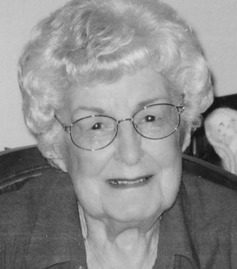 |
|
Donna-Mae Smith – Donna-Mae, who lived from January 1920 to April 2010, was the first woman bugler in the Women’s Army Auxiliary Corps (WAAC). When the WAAC was established during World War II, it was intended to recruit women into non-combat roles, freeing up men for front-line duty. Despite resistance and skepticism, Donna-Mae pursued her dream of becoming a bugler, which had been a male-dominated role. Her story is one of women having to stand taller, dig deeper and be stronger in the face of adversity to be acknowledged and accepted. Read more about Donna-Mae and honoring women Veterans here.
|
|
Marco Aurelio Ladino Avellaneda – Marco was born in Columbia and after immigrating to the US in 2009, he enlisted in the Army Reserve. He deployed to Kosovo in 2012 and Kuwait in 2014, as an internal medicine officer. Upon redeploying, Avellaneda returned to civilian practice as a doctor specialized in nephrology. He also served in the internal medicine clinic at Dwight D. Eisenhower Army Medical Center at Fort Gordon, Georgia. He continues to serve as the chief of nephrology at the VA medical center in Miami, where he also trains Veterans to become doctors. Check out Marco’s story here.
We honor their service.
|
|
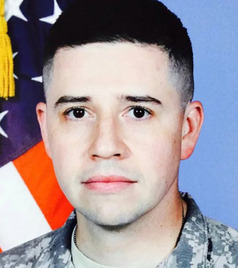 |
|
|
|
V A "G O O D N E W S" S T O R I E S
Last month, VA announced it delivered more care and benefits to more Veterans than ever before
in fiscal year 2023. These record accomplishments for Veterans, their families, caregivers, and survivors include:
-
Providing more world-class health care to Veterans: VA delivered more than 116 million health care appointments to Veterans, surpassing the previous all-time record by more than three million appointments.
-
Delivering more earned benefits to Veterans and survivors: VA delivered $163 billion in earned benefits, including $150 billion in compensation and pension benefits, to 1,535,685 Veterans and survivors – all of which are all-time records. VA also processed 1,981,854 Veteran and survivor claims, surpassing the previous all-time record by 15.9%.
-
Encouraging more Veterans to apply for earned benefits: Thanks to the largest outreach campaign in VA history, Veterans submitted 2,433,729 claims applications – an all-time record - and 39% more than in 2022. Veterans also submitted 2,299,815 intents-to-file – an all-time record and 62% more than in 2022.
-
Supporting more Veteran caregivers: VA provided services, resources, and assistance to a record 74,270 Veteran family caregivers.
-
Supporting more Veterans in crisis: The Veterans Crisis Line received 1,002,971 million calls, texts, and chat – surpassing the previous all-time record by 15.1%. VA also provided no-cost emergency health care to 33,542 Veterans in acute suicidal crises through a new program launched in January.
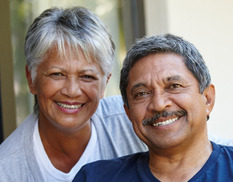
Family members of Veterans exposed to contaminated drinking water at Marine Corps Base Camp Lejeune from Aug. 1,1953 to Dec. 31,1987 are now eligible for reimbursement of health care costs associated with Parkinson’s disease under the Camp Lejeune Family Member Program.
These family members are also eligible for health care reimbursement for esophageal cancer, lung cancer, breast cancer, bladder cancer, kidney cancer, leukemia, multiple myeloma, renal toxicity, miscarriage, hepatic steatosis, female infertility, myelodysplastic syndromes, scleroderma, neurobehavioral effects, and non-Hodgkin’s lymphoma. Learn more about this announcement here.
|
|
|
|
|
|